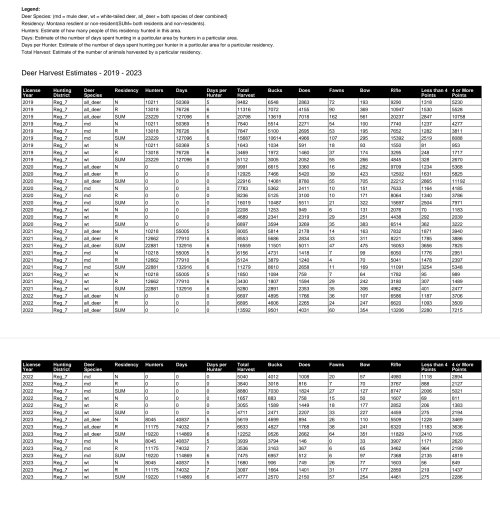rogerthat
Well-known member
- Joined
- Aug 29, 2015
- Messages
- 3,124
Yes. I would like to know the percentage of nr mule deer buck harvest that is outfitted in region 6 and 7. I am not aware of fwp having these statistics. This additional data is needed to get the whole picture of what is actually happening out thereBet 97% of the 29% do it on private and pay for it… Wonder what that does for local access or lawmaking





